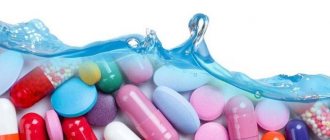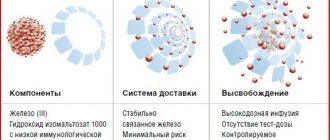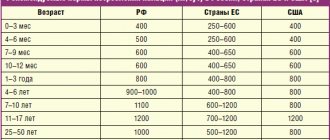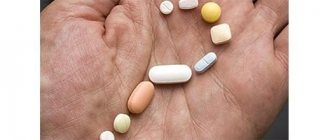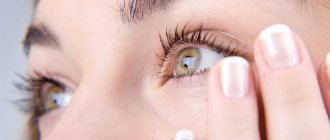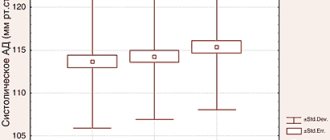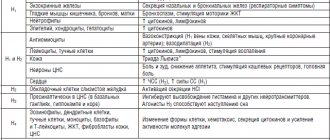Antihistamines are aimed at eliminating allergies in all its manifestations. During their action, the drugs block special receptors that are involved in the development of an allergic reaction. Especially if this is an immediate reaction, where the main role belongs to an organic compound - histamine. Under provoking factors, histamine becomes active in the human body and can lead to such types of allergies as:
- allergic rhinitis;
- allergic conjunctivitis;
- hives;
- angioedema;
- reaction to an insect bite;
- allergies to medications (tablets, sprays, etc.);
- food allergies;
- skin allergies, allergic dermatosis.
Taking an antihistamine (drops, tablets, ointment) in these cases is the first line of treatment. All medications in the form of tablets or drops act on H1 receptors located in the brain, blood vessels, smooth muscles, cardiac tissue, cartilage tissue, etc. [1].
Drugs are usually divided into two groups:
- 1st generation antihistamines
- 2nd generation antihistamines
1st generation antihistamines were developed back in the 40s. Since then, many drugs in this group have been tested. The most popular in Russia:
- Chlorphenamine;
- Chloropyramine (Suprastin);
- Dimetinden (Fenistil);
- Diphenhydramine (Diphenhydramine);
- Clemastine (Tavegil);
- Mebhydrolin (Diazolin);
The problem with 1st generation antihistamines is that their non-selective action can cause sedation and side effects:
- increased intraocular pressure;
- increased heart rate;
- deterioration of the gastrointestinal tract;
- dry mouth;
- drowsiness;
- slowing down the reaction.
Because of this, it is undesirable to use drugs in elderly people and patients with problems of the gastrointestinal tract, cardiovascular system, prostate gland and bronchial asthma. In other categories of people, it may not be advisable to increase the dose of the drug during treatment. Also, the drugs are characterized by a short antihistamine effect (up to 3-5 hours) and therefore they must be taken 3-4 times a day. Their use is not recommended for a long time, because... may be addictive.
15 years later, antihistamines were created that act selectively on H1 receptors. They no longer have a sedative effect. This category of drugs is usually called 2nd generation antihistamines.
Chemical structure and properties
Antiallergic drugs can be divided into several types depending on their chemical structure. Depending on the type and structure, pronounced effects and properties are formed.
| Type of drug: | Varieties: | Characteristic properties: |
| Ethanolamines | Clemastine, diphenhydramine, dimenhydrinate, doxylamine | A pronounced sedative effect, drowsiness, and m-anticholinergic effect. |
| Ethylenediamines | Chloropyramine | A pronounced sedative effect, drowsiness, and m-anticholinergic effect. |
| Alkylamines | Dimetindene, acrivastine, chlorphenamine | Causes increased stimulation of the central nervous system, but the sedative effect is weak. |
| Piperazines | Cetirizine, hydroxyzine | Weak sedative effect. |
| Piperidines | Ebastine, loratadine, levocabastine, fexofenadine | Weak sedative effect, practically do not affect the nervous system and lack anticholinergic properties. |
| Phenothiazines | Promethazine, hifenadine | Pronounced anticholinergic and antiemetic properties. |
In order to decide which antihistamines are better, you need to consider their distinctive features, positive and negative aspects, as well as the effect on the patient and the allergy itself.
The development of H1 receptor blockers occurred gradually, and today three generations of drugs can be distinguished, each of which has its own characteristics.
Advantages of 2nd generation AGP:
- prolonged action (one dose of 5-10 mg of the active substance is designed for 12-24 hours, in contrast to the 3-5 hours of action of the 1st generation AGP);
- ease of use, only 1 tablet per day
- absence of delayed reaction, impairment of mental activity, drowsiness is also minimized;
- lack of addiction;
- during treatment there is the possibility of increasing the dose and time of administration;
- the possibility of taking the drug for people with pathologies of the gastrointestinal tract, cardiovascular system and glaucoma.
Here you can select drugs based on:
- Cetirizine;
- Ebastina;
- Levocetirizine;
- Desloratadine;
- Fexofenadine.
RAAKI [2] and the American Society of Allergists recommend the use of 1st generation antihistamines only in cases where it is impossible to use 2nd generation antihistamines. The most prominent representative of the latest generation of antihistamines is cetirizine. In terms of sales volume in the pharmacological market in Russia, as well as in terms of prescription among specialists, Cetrizine No. 1 is the drug Cetrin®[3].
The best products for children
Even the safest third-generation drug can cause an allergic reaction.
In this regard, doctors rarely prescribe such medications to children under 2 years of age, moreover, they have not been sufficiently studied in the field of pediatrics.
For children aged 3-4 years and older, the latest medications are becoming the best solution for treating allergies of any kind.
Each instruction usually contains recommendations for use by children, as well as exact dosages. But it should be remembered that with prolonged allergies (3-4 weeks), even modern medications need to be changed to avoid addiction.
Antihistamines for skin allergies
Allergic dermatitis manifests itself as skin rashes. These include urticaria, atopic and allergic dermatitis, neurodermatitis and others.
To treat skin allergies, the type is diagnosed, developmental factors are determined, skin tests are collected, and the allergen is eliminated. After this, local and systemic therapy is prescribed. During the period of subsidence and remission, allergen-specific immunotherapy is carried out, which “hardens” the body against the allergen and reduces the number of relapses.
Local therapy for skin allergies involves combating itching and reducing the inflammatory response. Atopic dermatitis in some cases requires the administration of glucocorticoids for external use.
Systemic therapy involves the use of antihistamines, because they have an antipruritic effect; the experience of using AGP for atopic dermatitis indicates the success of treatment.
In addition, an antihistamine must be prescribed if the patient has aggravating respiratory phenomena: allergic or seasonal rhinitis. In case of acute edema, it is recommended to reduce the severity with the help of a 2nd generation antihistamine.
For allergic dermatitis affecting the skin of the eyes, a good solution would be to use the medicine in the form of drops. For urticaria (except for acute cases and edema), it is necessary to take antihistamines systemically.
Erius
The drug is indicated for the treatment of seasonal hay fever, allergic rhinitis, chronic idiopathic urticaria with symptoms such as lacrimation, cough, itching, swelling of the nasopharyngeal mucosa.
Flaws
Side effects may occur (nausea and vomiting, headache, tachycardia, local allergic symptoms, diarrhea, hyperthermia). Children usually experience insomnia, headaches, and fever.
Advantages
Erius acts exceptionally quickly on allergy symptoms and can be used to treat children from one year old, as it has a high degree of safety.
It is well tolerated by both adults and children; it is available in several dosage forms (tablets, syrup), which is very convenient for use in pediatrics. It can be taken for a long period of time (up to a year) without causing addiction (resistance to it). Reliably stops the manifestations of the initial phase of the allergic response.
After a course of treatment, the effect lasts for 10-14 days. Overdose symptoms were not noted even with a fivefold increase in the dose of Erius.
Antihistamines for food allergies
A food allergic reaction develops in the body after the irritant enters the digestive tract. Any product can cause an allergic reaction, but more often:
- lactose;
- cow's milk protein;
- egg;
- fish, crayfish and shrimp;
- legumes, peanuts and soybeans;
- cereals;
- tomatoes;
- citruses.
Most often, food allergies occur in young children. This happens due to the immaturity of the digestive tract and lack of tolerance to most substances. It may go away with growing up, so ASIT (allergen-specific immunotherapy) is prescribed only to people in adulthood.
Food allergies are often accompanied by skin manifestations, urticaria, dermatitis, rashes and itchy skin. There is also disruption of the mucous membrane, allergic rhinitis, conjunctivitis, and Quincke's edema.
To treat a food allergy, it is necessary to identify the allergen and eliminate it from the diet. To relieve symptoms, it is recommended to take an antagonist substance that blocks histamine.
It is also advisable to prescribe vasoconstrictor drops for allergic rhinitis due to food allergies.
In case of a systemic allergic reaction to foods, antihistamine tablets are prescribed to avoid anaphylactic shock. In case of acute manifestations, after recovery from anaphylactic shock, a course of treatment with chloropyramine and clemastine is prescribed.
For allergic rhinitis, urticaria and other manifestations of an acute reaction of the body, it is recommended to take antihistamines such as Cetrin®.
The drug is suitable for long-term use. The onset of the effect after a single dose of 10 mg of cetirizine is 20 minutes, lasts more than 24 hours. During the course of treatment, tolerance to the antihistamine effect of cetirizine does not develop. After stopping treatment, the effect lasts up to 3 days5.
Orally, regardless of food intake, without chewing, the tablets are taken with 200 ml of water. Adults – 10 mg (1 tablet) 1 time a day or 5 mg (1/2 tablet) 2 times a day. Children over 6 years old - 5 mg (1/2 tablet) 2 times a day or 10 mg (1 tablet) 1 time a day. In patients with reduced renal function (creatinine clearance 30–49 ml/min), 5 mg/day (1/2 tablet) is prescribed, in severe chronic renal failure (creatinine clearance 10–30 ml/min) – 5 mg/day ( 1/2 tablet) every other day5.
Cetrin® is usually well tolerated. In some cases, possible: drowsiness, dry mouth; rarely - headache, dizziness, migraine, discomfort in the gastrointestinal tract (dyspepsia, abdominal pain, flatulence), allergic reactions (angioedema, rash, urticaria, itching) [4], [5].
Indications for use
A doctor should definitely prescribe antihistamines, including the latest generation, after making an accurate diagnosis. As a rule, their use is advisable in the presence of the following symptoms and diseases:
- early atopic syndrome in a child;
- seasonal or year-round rhinitis;
- negative reaction to plant pollen, animal hair, household dust, some medications;
- severe bronchitis;
- angioedema;
- anaphylactic shock;
- food allergies;
- enteropathy;
- bronchial asthma;
- atopic dermatitis;
- conjunctivitis caused by exposure to allergens;
- chronic, acute and other forms of urticaria;
- allergic dermatitis.
Bibliography
- [1] Sergeev Yu.V. Allergy to materials used in orthopedic dentistry [Text] / Yu.V. Sergeev, T.P. Guseva // Attending physician. – 2004 – No. 3. – 38-41 s.
- [2] Allergology. Clinical recommendations developed by the RAACI Working Group / ed. R. M. Khaitova. – M.: Farmarus Print Media, 2013. – p. 126 p.
- [3] Agafonova V.A. Study of antihistamines of 3 generations: materials of the V student international correspondence scientific and practical conference “Scientific community of students of the 21st century. Natural Sciences” / V.A. Agafonova, Yudicheva K.V. – M.: publishing house Siberian Association of Consultants, 2012. – 322 p.
- [4] Korsunskaya I.M. Skin itching: what you should think about / I.M. Korsunskaya, E.V. Dvoryankova, K.T. Plieva [etc.] // Effective pharmacotherapy. – 2015. – No. 45. – 14-18 s.
- [5] Instructions for use of the medicinal product for medical use Cetrin®. – Registration number: P N013283/01.
What can trigger an increase in histamine?
Allergens are substances that provoke increased release of histamine. Medicine has studied many allergens that can be divided into such groups.
Exogenous infectiousExogenous non-infectiousEndogenousVirusesFoodProtein-containing compounds that make up the cells of the bodyBacteriaPolenFungiIndustrialHouseholdMedicinal
Endogenous allergens are produced by the body itself. They cause autoimmune diseases (attacks of the immune system on healthy tissues).
Exogenous ones enter the body from the environment - through food, plant pollen, house dust. Industrial allergens include a variety of chemicals (dyes, cleaning products, fragrances).
